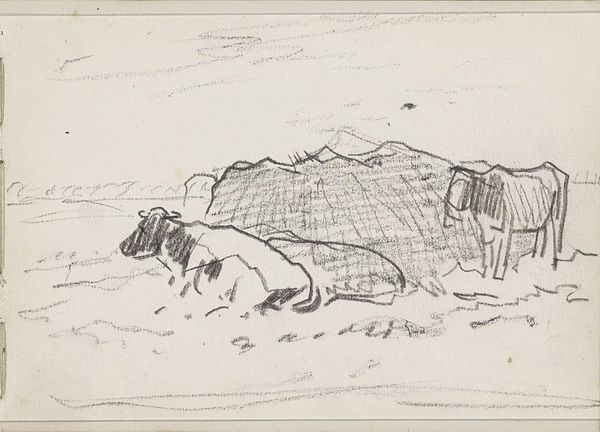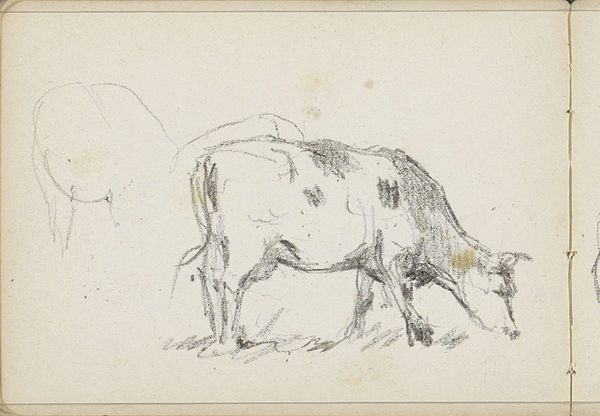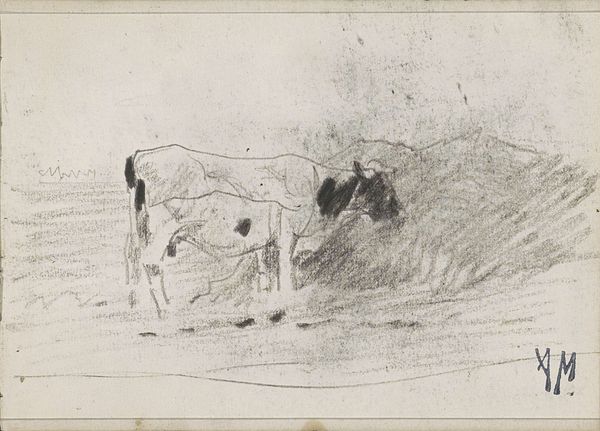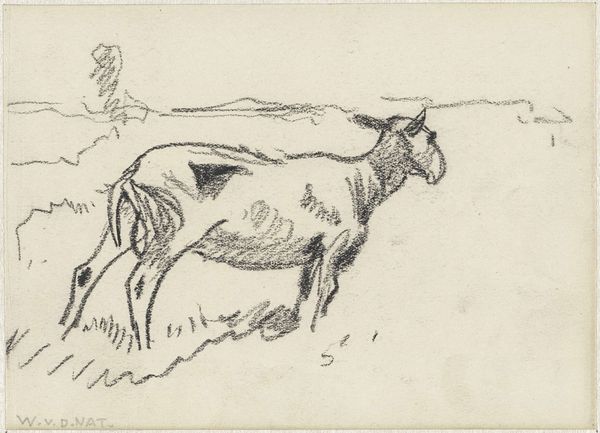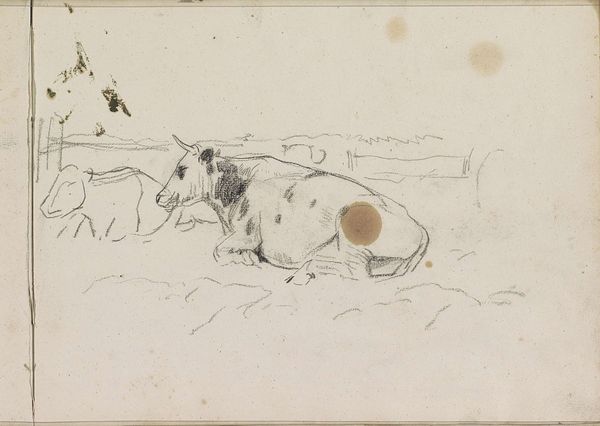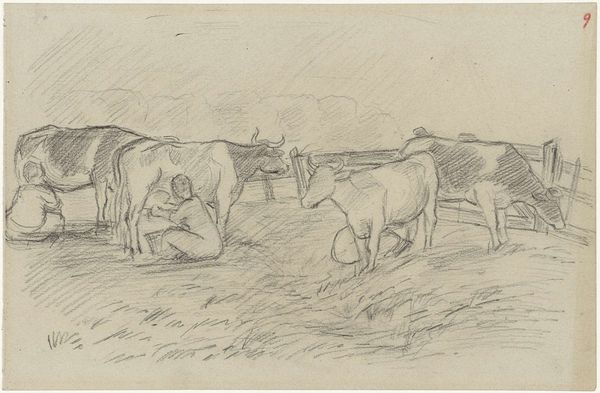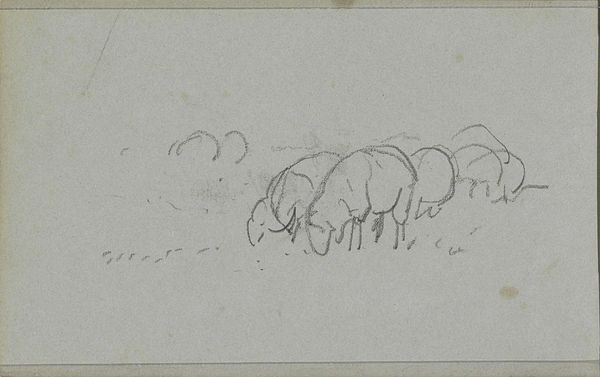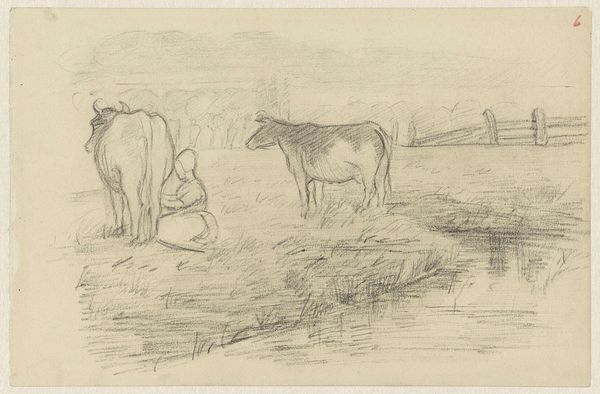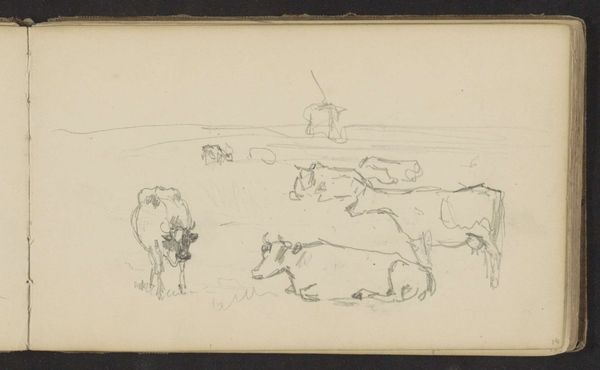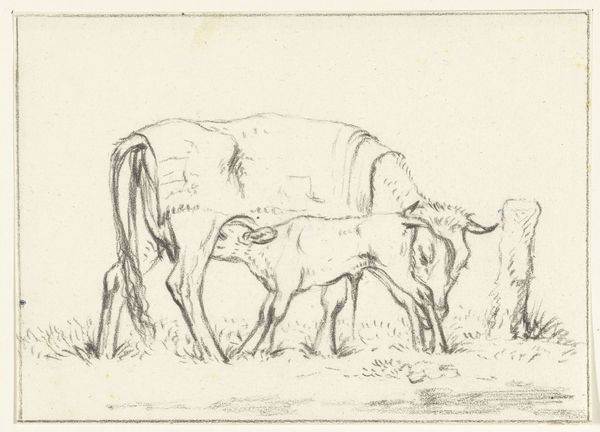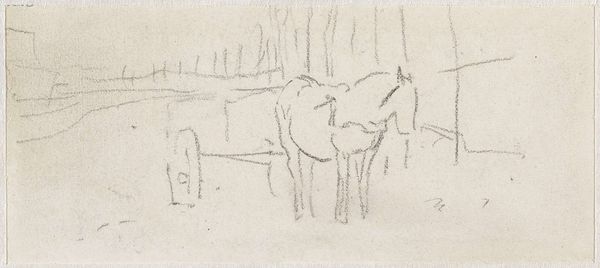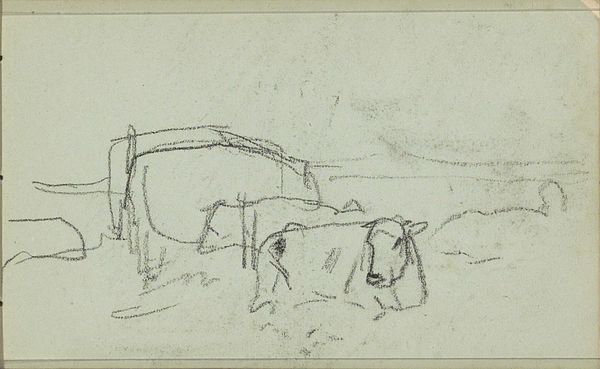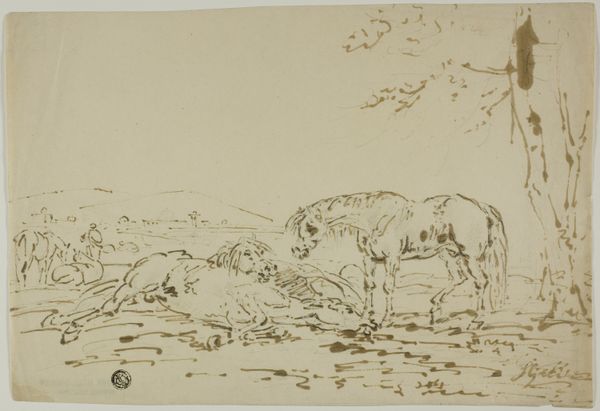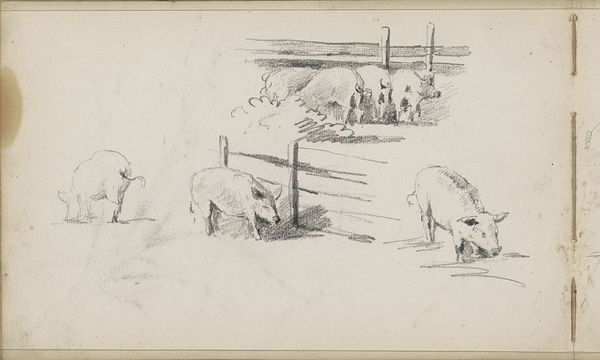
drawing, pencil
#
drawing
#
dutch-golden-age
#
impressionism
#
pencil sketch
#
landscape
#
pencil
#
genre-painting
#
northern-renaissance
#
realism
Copyright: Rijks Museum: Open Domain
Curator: Looking at this lovely pencil sketch titled "Twee koeien bij een hooibaal"—or "Two Cows by a Hay Bale"—from Anton Mauve, probably created sometime between 1848 and 1888. It resides here at the Rijksmuseum. Editor: There's a certain melancholic stillness about it, isn’t there? Sparse, almost as if captured in a dream, it reminds me of childhood summers. What grabs you first? Curator: The artist's hand, quite frankly! The visible marks, the swiftness, the confident economy of line. Think about Mauve holding that pencil, his perception distilling this pastoral scene into just what's essential. The very making of the image speaks to me. Editor: Yes, the material’s immediacy is crucial! Pencil on paper-- humble materials depicting everyday labor in the fields. Makes you wonder, did Mauve consider himself a craftsman, sketching "studies" for the sophisticated elite? How did this reflect class perceptions about working rural folk, themselves tethered to manual labour? Curator: Perhaps. Though his sensitivity sings louder. I mean, note the languid repose of that cow, almost a curve of quiet contemplation amidst the rough stubble indicated by all those energetic lines. Isn't there something quietly radical in dignifying bovine rest like this? Editor: Radical perhaps if viewed as part of a shift away from formal academic portrayals of animals. The scale too; we're not talking of a massive canvas, are we? Was art becoming more about the fleeting experience accessible to common folks with less to spend? Or feeding into bourgeois fantasies of 'rustic' simplicity? Curator: Maybe both? Art contains multitudes! What intrigues me is how, with just a few graphite strokes, Mauve can suggest texture – the roughness of the hay bale versus the sleek hide of the resting cow. And observe, towards the horizon – is that the faintest line suggesting a treeline? The simplicity invites a kind of active dreaming, does it not? Editor: It absolutely does – inviting deeper engagement with process: the availability of new and portable sketching materials in that period facilitating immediate en plein air capturing of everyday rural sights. Curator: Ultimately, it makes me ponder what “realism” truly means. Is it photographic likeness, or capturing some truth about quiet, essential moments that elude cameras? Editor: For me it brings into sharp focus a quiet observation about everyday farm life that Mauve could easily capture so precisely due to evolving material means in the art world at the time.
Comments
No comments
Be the first to comment and join the conversation on the ultimate creative platform.
